Howard J. Doss and William McLeod Michigan State University
Agricultural electrical systems have their own special requirements to reduce the risk of fires, injuries, and to ensure that electric motors and other equipment operate properly.
Some of the special requirements needed for an agricultural setting include increased height of overhead lines to accommodate tall farm equipment such as combines and grain augers, special insulated wire to withstand damp environments inside farm buildings, and ground-fault circuit interrupters (GFCI) to ensure operator safety in the event of an extension cord or tool coming in contact with water.
OVERHEAD LINESGrain augers, bale elevators and other tall equipment touching overhead electric lines has claimed the lives of many Michigan farmers over the past several decades. Generally, the accident has resulted from the operator failing to lower an auger or elevator before moving it in an area where overhead lines were located. While increased line height may have prevented these accidents, lowering the auger would have eliminated any risk of it touching electrical lines.
It should also be noted that there are several grain augers manufactured that can be raised and lowered by a tractor:s hydraulic unit, reducing the time and effort required to :crank: an auger up or down by hand.
Placement of Overhead Lines
There are two sets of guidelines to consult for placement of overhead power lines for grain-handling systems, the National Electrical Safety Code (NESC) and the National Electric Code (NEC). NESC standards apply primarily to electrical supply equipment wires ahead of the transformer location that serves the farm. NEC standards address electrical wiring from the meter to the load site.
NESC standards for portable systems (moveable augers) requires that the height of the overhead line must be at least 18 feet above the highest port of the grain bin. This line height must be maintained on the loading side of the bin for an additional 18 feet plus the height of a bin. For example, the overhead line for a 20-foot tall bin must be at least 38 feet above the ground, and the post on the loading side must be a minimum of 38 feet from the bin:
Outside this 38-foot horizontal offset, the line may be sloped down to its regular height at a 1:1.5 ration (67 percent slope).
NESC standards for fixed grain-handling systems require that the overhead line serving the transformer must be a minimum of 12.5 feet above the roof of any solid structure that is not easily accessible to people. In situations where the roof of a structure is easily accessible, such as a grain bin, the height must be 18 feet above the highest port of the bin. A 7.5-foot horizontal clearance must be maintained for the height of the overhead line.
NESC also requires that any overhead lines over a roadway or path where cultivation equipment travels must be a minimum of 18.5 feet above the ground. This ensures that equipment such as a combine or tractor will not come into contact with the line. Tillage or harvesting equipment that contacts an overhead line can be as hazardous as touching the line with a grain auger.
NEC standards, which apply to electrical lines from the meter to the distribution points, require an 8-foot minimum clearance above rooflines that are easily accessible to people (grain bin roofs). NEC standards also require a 3-foot horizontal clearance between equipment and insulated conductors and an 18-foot clearance above roadways for the transportation of forest, orchard, grazing or cultivation equipment.
WIRING AGRICULTURAL FACILITIESThere are numerous variables for the electrification of barns and other farm facilities that cannot be addressed in any single publication. This section will provide recommendations as to the type of wire and conduit to be used. For additional information contact your local electrical inspector, electrician or electrical supplier.
Non-metallic Sheathed Cable
|
Table 1. Current Capacity of Certain Cables* |
|
Cable type |
Conductor size (AWG No.) |
Maximum Allowable Amps (Fuse size) |
|
(copper) |
(aluminum) |
|
NMC, UF |
#14 |
#12 |
15 |
|
#12 |
#10 |
20 |
|
#10 |
#8 |
30 |
|
* - There are many exceptions to this table; therefore, check with a qualified electrician before purchasing cable for a branch circuit. |
Because agricultural structures,
particularly animal facilities, are frequently damp due to inadequate environmental controls, "Type NMC" or "UF" cable is recommended for most situations. These types of cables, because there is no paper installation, are able to withstand damp environments without becoming corroded.
The gauge of the cable needed for a specific circuit branch varies with the length of run and the demand of the power equipment to be connected. Table 1 is presented to give general guidelines only, check with a qualified electrician before purchasing cable to connect a branch circuit.
Protecting Electric Cable Encasing electric cable inside conduit provides extra protection from livestock and gnawing rodents.
There are two basic types of conduit, metal and PVC (plastic). PVC is preferred inside agricultural structures because it is not corroded by moisture and is generally less expensive than metal conduit. Both metal and PVC conduit can be sealed where it joins receptacles, junction boxes, etc., reducing moisture concerns.
All electric cable in an agricultural structure, whether it be encased in conduit or not, should be placed in open areas for frequent inspection and maintenance. Where possible, keep electrical switches, wires, etc., out or the reach of livestock.
GROUND-FAULT CIRCUIT INTERRUPTERS (GFCI)A ground-fault circuit interrupter (GFCI) is a circuit breaker designed to prevent serious shock to people or animals under certain conditions. It can reduce the risk of shock when using electrical tools or appliances in damp or wet areas.
The GFCI works on the principle that the two wires supplying a single-phase electrical load must carry the same number of amperes (current) when the circuit is operating properly. If a ground-fault occurs, either to the grounding wire or through a person or animal, some of the current will take an alternate route back to the system:s grounding electrode. One of the wires will then carry less current than the other wire. When this occurs the GFCI will break the circuit, stopping the flow of electricity in a fraction of a second to reduce the electric shock hazard.
Ground-fault circuit interrupters come in several styles. They are commonly used as a receptacle outlet, part of an extension cord, or can be installed in the main electrical panel to replace an existing circuit breaker. When installed as a circuit breaker, the GFCI offers shock protection to an entire electrical branch.
Ground-fault circuit interrupters are available for 120-V circuits with one hot wire and a neutral. A GFCI will work on older two-wire electrical systems that have no ground wire. A 120-V, single-pole GFCI fits into the same size space as a standard single-pole breaker. There are also GFCIs for 240-V circuits using two hot wires.
All equipment plugged into a GFCI protected receptacle, including any two-prong (two-wire) electrical plug, will have ground-fault protection.
A portable GFCI is recommended for persons using power tools in damp or wet locations. The portable GFCI is plugged into an outlet and the power tool is plugged into the GFCI.
Certain conditions can result in "nuisance tripping" of a GFCI protected circuit or receptacle.
Nuisance tripping can be reduced by avoiding:
-
Circuits longer than 100 ft.
-
Older non-double insulated power tools that contain faulty electrical insulation.
-
Fluorescent or other types of electric-discharge lighting fixtures.
-
Extension cords with cuts or splices where moisture has entered the cut or splice creating a "leak" (ground fault) or path for the current to flow outside of the wire to the ground.
-
Permanently installed electric motors.
Installing a GFCI to prevent electrical shock from farm equipment seems like a good idea, but nuisance tripping may become a serious problem. The loss of a ventilation system in certain livestock facilities can be fatal to animals if the GFCI tripped. Stock waterers may freeze in northern climates if the GFCI trips. Carefully consider the effects of loss of power to an agricultural circuit before installing GFCI protection. The most effective shock prevention system for agricultural equipment and circuits is a good equipment grounding conductor run with the circuit wires and connected to all metal agricultural equipment.
EXTENSION CORDSDamaged or improperly used cords can result in electrical shocks or start fires. Avoid using extension cords in farming operations. Follow these precautions if you must use an extension cord:
-
Do not use in wet areas.
-
Do not try to repair a damaged extension cord or splice two wires together. Replace the cord.
-
Keep cords away from sharp objects, heat, oil, and solvents that can damage insulation.
-
Check an extension cord before each use for nicks and cuts. Replace the cord if the insulation is damaged or worn.
-
Use an extension cord with correct size wiring (gauge) for the intended use. Do not overload an extension cord or use a "household" type extension cord to operate heavy-duty machinery. Overloading may cause excessive heating that may result in a fire.
|
Table 2. Hard Service Extension Cords |
|
Cord Length |
Conductor AWG No. |
|
Up to 35' |
#14 |
|
36' to 75' |
#12 |
|
76' to 100' |
#10 |
|
#16 cord should be primarily for service cords on appliances and equipment where the maximum load does not exceed 10 amperes or 1150 watts.
#18 cord (PO-1 or SF-1) will safely carry a maximum load of 7 amperes or 800 watts. |
-
Use a grounded wire (three-prong with a "safety grounding" wire) for tools and machines having a grounded plug or use a portable GFCI (ground-fault circuit interrupter).
-
Be sure the package for the cord indicates the maximum current and/or wattage rating of the cord.
-
Route the cord to protect it from machinery and animals. Also, people should not be able to trip over or accidentally damage the cord.
-
Two extension cords plugged together for additional length will reduce the amperage rating and increase the risk of an electrical hazard.
-
Extension cords deteriorate; do not use them in place of permanent electrical installations.
-
When purchasing extension cords, make sure the cord has a listing mark or certification of a recognized independent testing laboratory. For agricultural use, extension cords with a strong outer coating should be purchased. Extension cords labeled "Type S" (Hard Service Cord) have the strongest outer covering available and should be purchased for work on the farm. Do not be confused with other "S" ratings such as "Type SJ" (the J stands for Junior Hard Service Cord), which should not be used out-of-doors.
Extension cords are sold in various cable sizes, with the smaller number being the larger wire size (a number 10 wire is larger than a number 14).
Table 2 presents some general guidelines for cord length of extension cords.
REFERENCES
-
Guide for Selecting Electric Cords and Cables, Truman C. Surbrook, Agricultural Engineering Department, Michigan State University. AEIS 236.
Clearance of Electric Supply Conductors to Grain-Handling Equipment, R.J. Gustafson, Agricultural Engineering Department, Ohio State University.




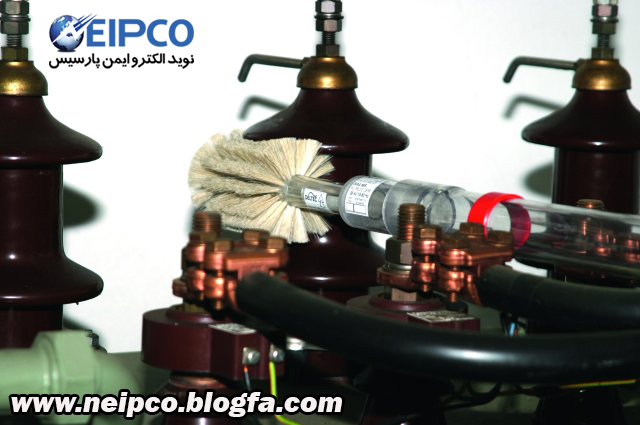
























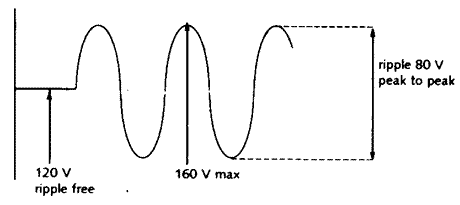


 It is easy to forget that electricity can cause a fire as easily as any gas appliance. With an increasing number of electrical goods appearing in our homes, it is important to remember to use these appliances with care and safety, and to check them regularly for any potential dangers.
It is easy to forget that electricity can cause a fire as easily as any gas appliance. With an increasing number of electrical goods appearing in our homes, it is important to remember to use these appliances with care and safety, and to check them regularly for any potential dangers. Plugs that are fraying or badly wired are also a hazard. Any coloured wires that are visible could come loose, or cause water and dirt to get into the plug. If the plug lead is fraying, do not just repair it with tape and this will not fully prevent any dirt or damage occurring.
Plugs that are fraying or badly wired are also a hazard. Any coloured wires that are visible could come loose, or cause water and dirt to get into the plug. If the plug lead is fraying, do not just repair it with tape and this will not fully prevent any dirt or damage occurring.
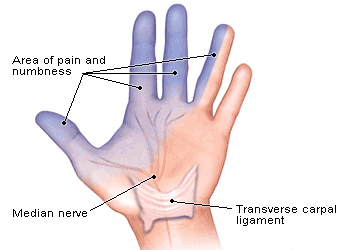
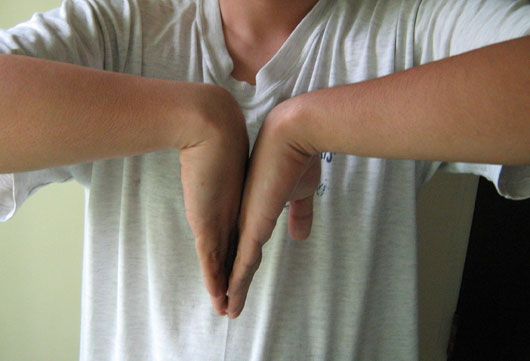
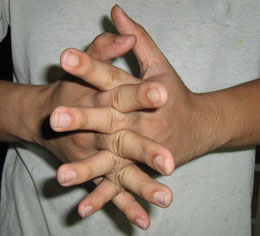


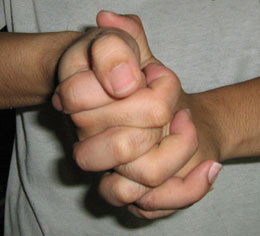

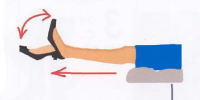
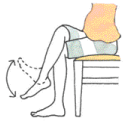

 معرفی مختصر :
معرفی مختصر :